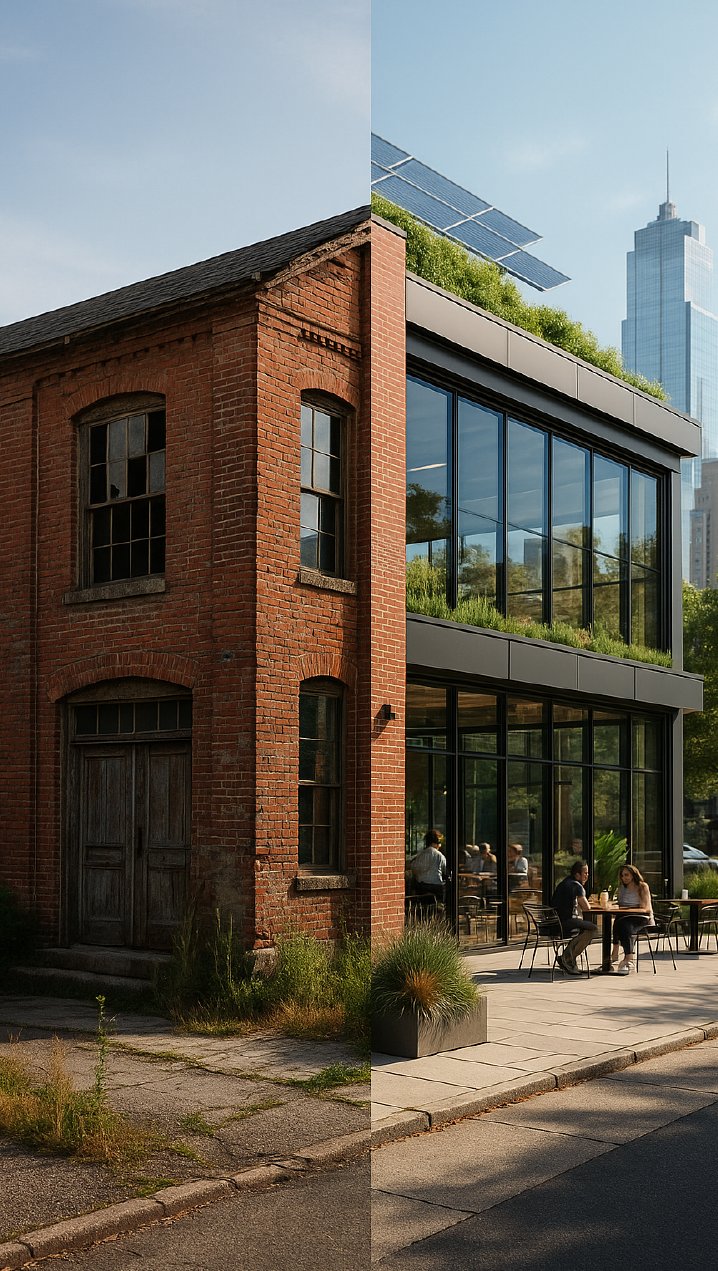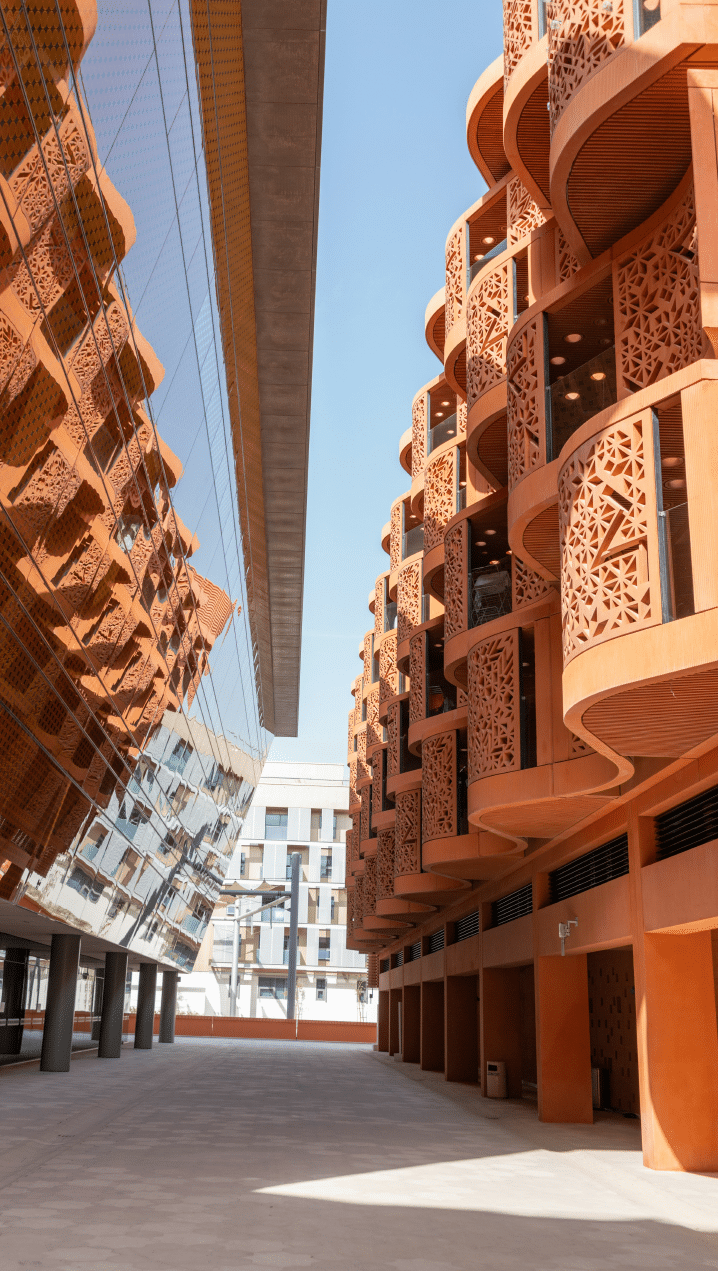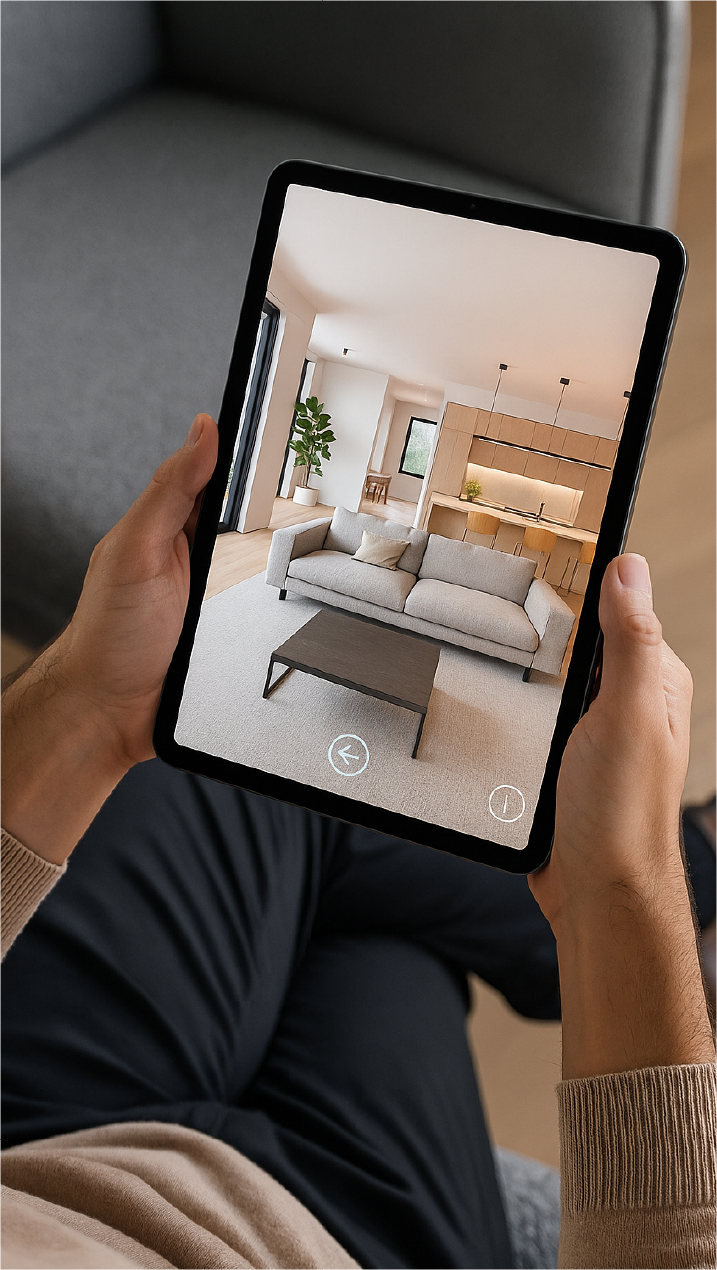What Is Adaptive Reuse?
Let’s kick things off with a simple truth: buildings aren’t disposable. In an era where sustainability is more than just a buzzword, adaptive reuse has emerged as one of architecture’s smartest responses to climate change, overdevelopment, and vacant urban spaces.
So, what is it? It’s the process of repurposing an existing building for a new function—turning an old warehouse into apartments, or a decommissioned church into a co-working hub. This goes beyond renovation. While renovations preserve a building’s original use, this technique completely transforms its purpose entirely.
As Carl Elefante famously put it, “The greenest building is the one that is already built.” And in a world facing urgent climate challenges, this couldn’t be more relevant. It’s no wonder that up to 90% of real estate development in the coming decade may prioritize reusing over rebuilding.
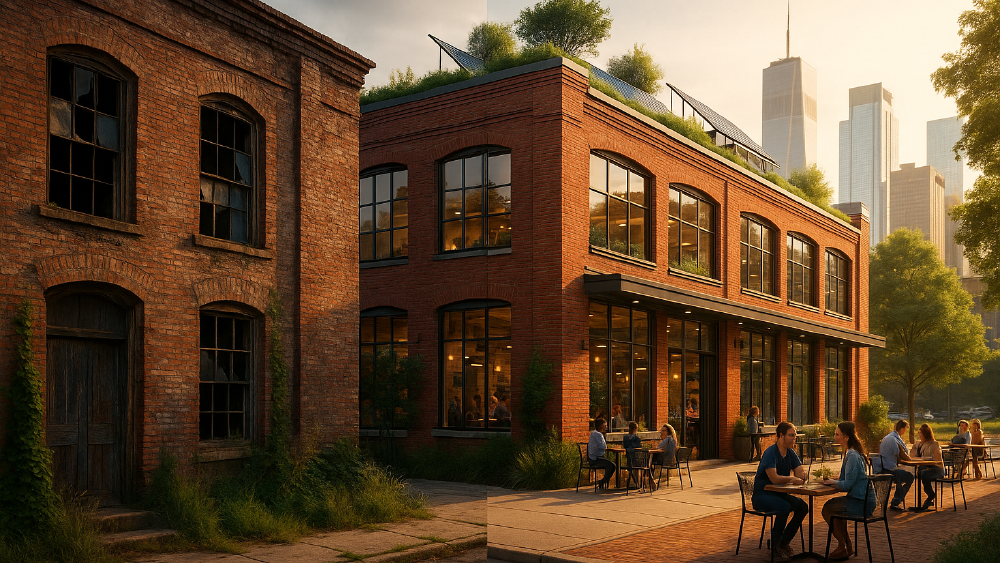
What Is the Theory of Adaptive Reuse?
It isn’t just a technique—it’s a mindset rooted in sustainability, efficiency, and creativity. Instead of tearing down and starting fresh, it asks: What if we give this building a second life?
At its core, it supports the circular economy, repurposing existing materials and infrastructure to reduce waste. Every brick and beam represents embedded energy, and conserving those materials keeps valuable resources out of landfills.
It also plays a critical role in urban regeneration, turning abandoned buildings into active spaces that serve today’s communities. Architecturally, it challenges us to see buildings not only for what they are, but what they could become.
Adaptive Reuse of Heritage Buildings
Some buildings carry more than steel and stone—they carry stories.
Adaptive reuse architecture becomes especially meaningful when it intersects with heritage structures. These are buildings that reflect a city’s culture and history—churches, train stations, old civic buildings—and they often sit neglected due to outdated functions.
The difference between adaptive reuse and historic preservation? Simple:
- Preservation keeps a building frozen in time.
- Adaptive reuse lets that building evolve, respectfully.
Take Ghirardelli Square in San Francisco—once a 19th-century chocolate factory, now a vibrant public space. Or the Hollywood Western Building in L.A., an Art Deco landmark reimagined as affordable housing while preserving its facade and historical identity.
These projects honor the past without getting stuck in it.
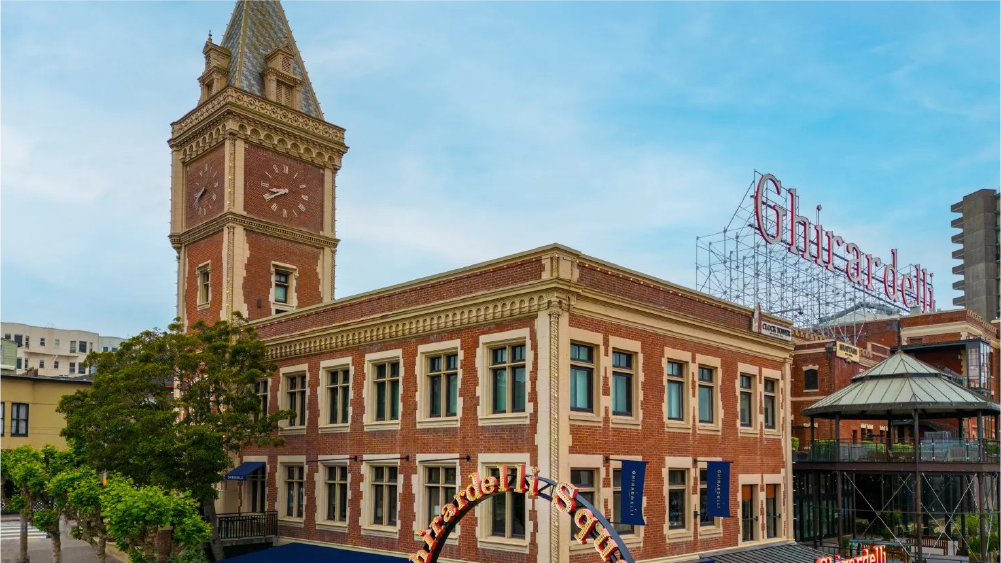
Ghirardelli Square in San Francisco
How Adaptive Reuse Benefits Cities
Adaptive reuse offers cities a smarter, more culturally sensitive way to evolve. Instead of demolishing and rebuilding, municipalities can reintegrate forgotten structures—like vacant schools, warehouses, and churches—into the urban fabric as functional assets.
This approach plays a vital role in addressing urban vacancy and economic stagnation. By transforming underused buildings into housing, retail, or civic spaces, cities can reactivate entire neighborhoods without massive disruption. The result? Increased property values, stronger community identity, and renewed local pride.
Crucially, adaptive reuse preserves the architectural language of a city. It allows planners to balance progress with heritage, maintaining the soul of historic districts while updating them for modern use.
It is reshaping cities like Detroit and L.A., offering economic and cultural value—but it adds complexity. As noted by the National Association of Realtors in “Adaptive Reuse Puts Property Managers to the Test”, managing these projects requires handling mixed uses, unique tenants, and custom systems with skilled oversight.
Adaptive Reuse and Sustainable Urban Development
When it comes to sustainability, adaptive reuse checks all the right boxes—and then some.
One of its biggest environmental strengths is minimizing embodied carbon. Every reused wall, beam, and floor avoids the emissions tied to demolition and new material production. This drastically reduces construction waste and supports greener, lower-impact development.
Even better, adaptive reuse makes cities more efficient. Repurposed buildings in central areas bring people closer to jobs, transit, and services—encouraging walkability and reducing vehicle emissions. Unlike sprawling suburban growth, this strategy strengthens the existing urban core.
From a policy lens, adaptive reuse aligns seamlessly with climate action frameworks and green infrastructure goals. It’s a practical, scalable way to move toward net-zero targets—without the cost or disruption of starting from scratch.
In essence, adaptive reuse turns sustainability from an abstract idea into a built reality. It empowers architects, planners, and developers to lead the transition toward smarter, more resilient cities.
What Are the Challenges of Adaptive Reuse?
Of course, reimagining old spaces isn’t without its hurdles.
- Structural Issues: Aging buildings may harbor unsafe materials like lead paint or asbestos, or simply be in poor condition.
- Regulatory Barriers: Adapting buildings to meet seismic codes, ADA standards, or zoning laws often requires creative (and costly) problem-solving.
- Budget Concerns: While reuse can save money, unexpected repairs or restoration costs can stack up quickly.
- Historic Constraints: Working with protected buildings may limit what can be altered.
That’s why every adaptive reuse project needs a solid team: architects, preservation specialists, engineers, and planners who know how to honor the past while building for the future.
What Is an Example of the Adaptive Reuse of a Building? Example Projects in the United States
Let’s take a look at adaptive reuse in action. From coast to coast, American cities are proving just how versatile and powerful adaptive reuse can be. Here are some standout projects:
Roebling Lofts – Trenton, NJ
A former wire factory turned into LEED Gold-certified housing, complete with solar panels and preserved original architecture.
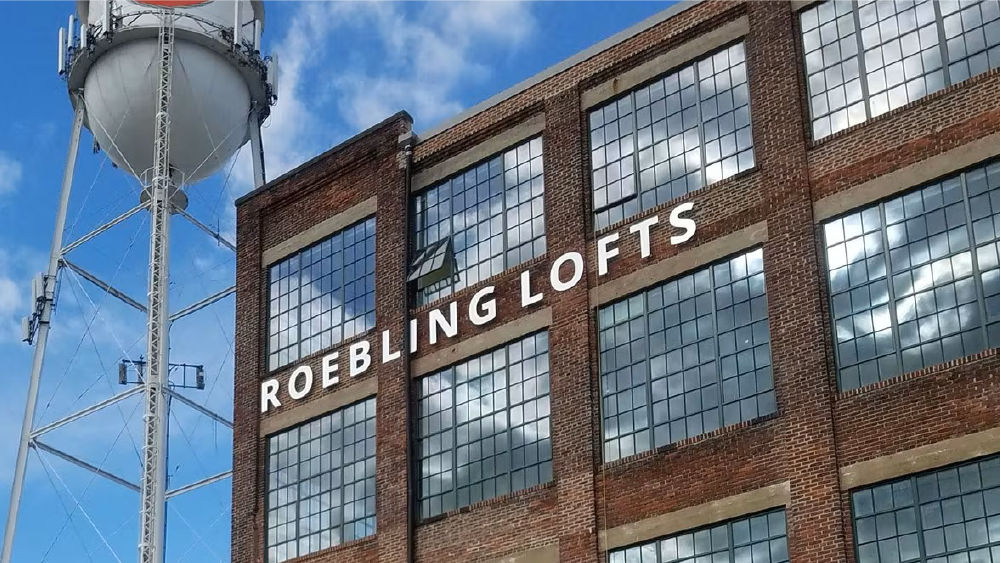
One Westside – Los Angeles, CA
A defunct shopping mall transformed into a Google office campus, with open terraces and indoor-outdoor workspaces.
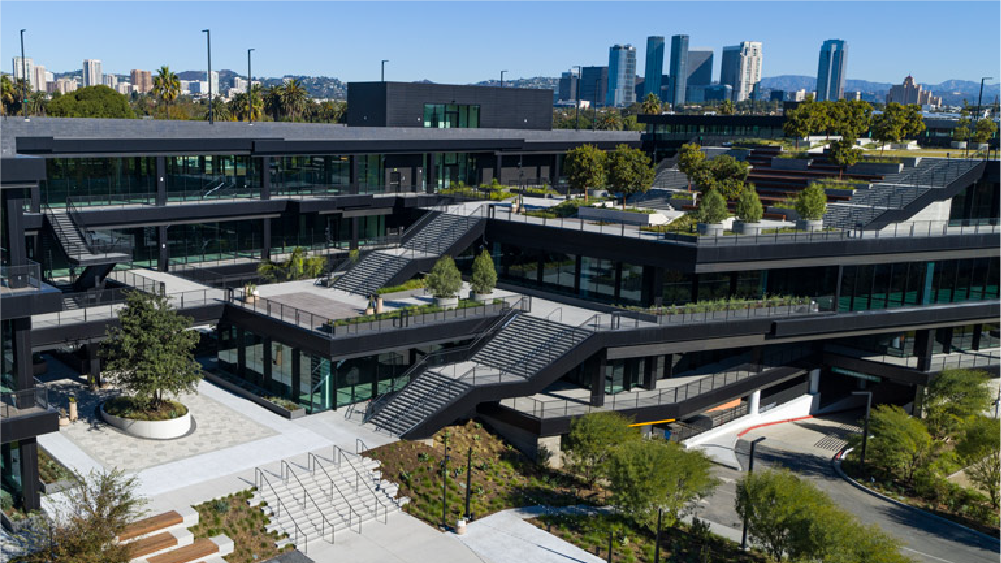
The Green Building – Louisville, KY
A 115-year-old structure reborn as a sustainable commercial space featuring geothermal wells and a green roof.
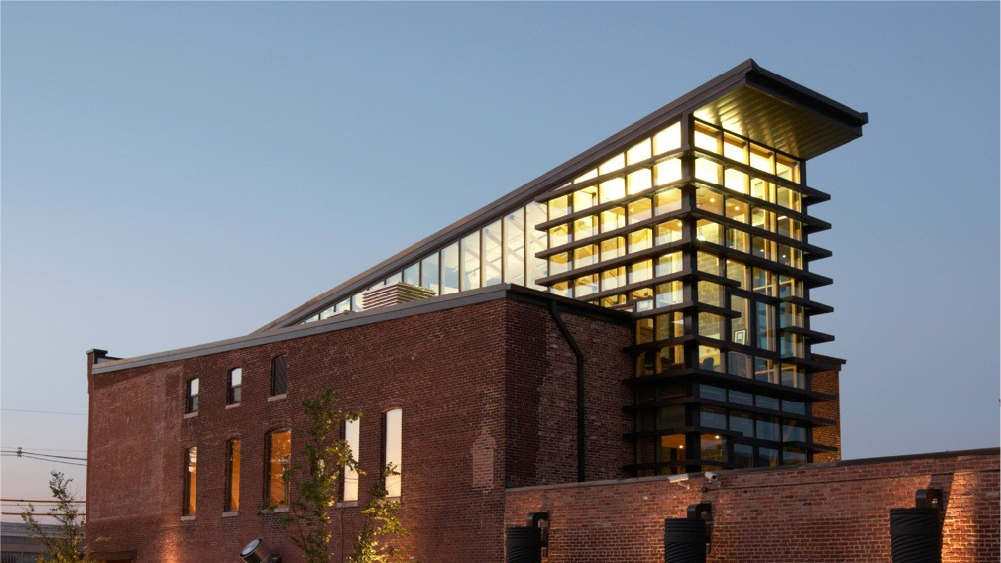
Hollywood Western Building – Los Angeles, CA
An Art Deco landmark adapted into mixed-use affordable housing, preserving its unique facade.
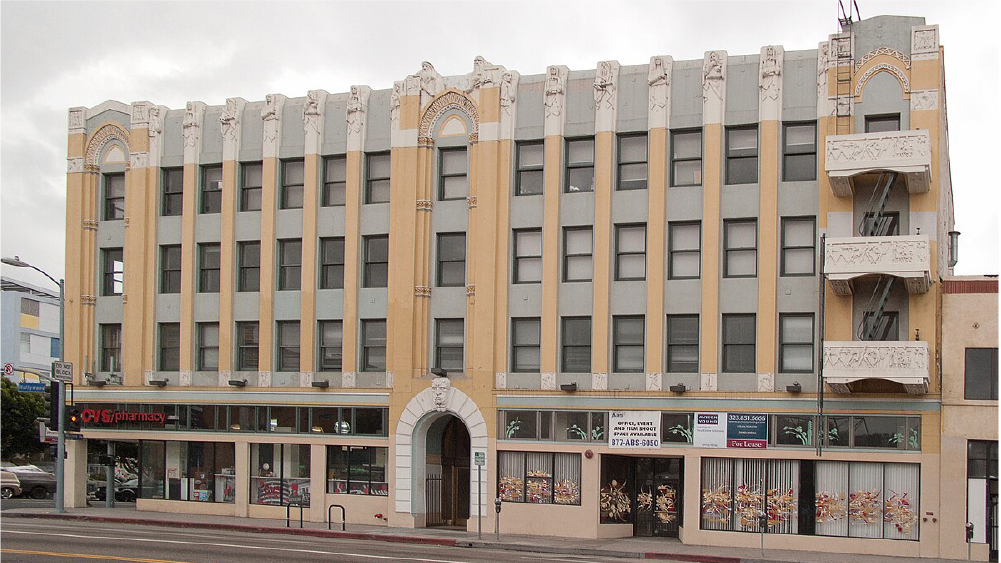
Church Residence – Chicago, IL
A church turned into a private residence, maintaining features like stained-glass windows and a bell tower.
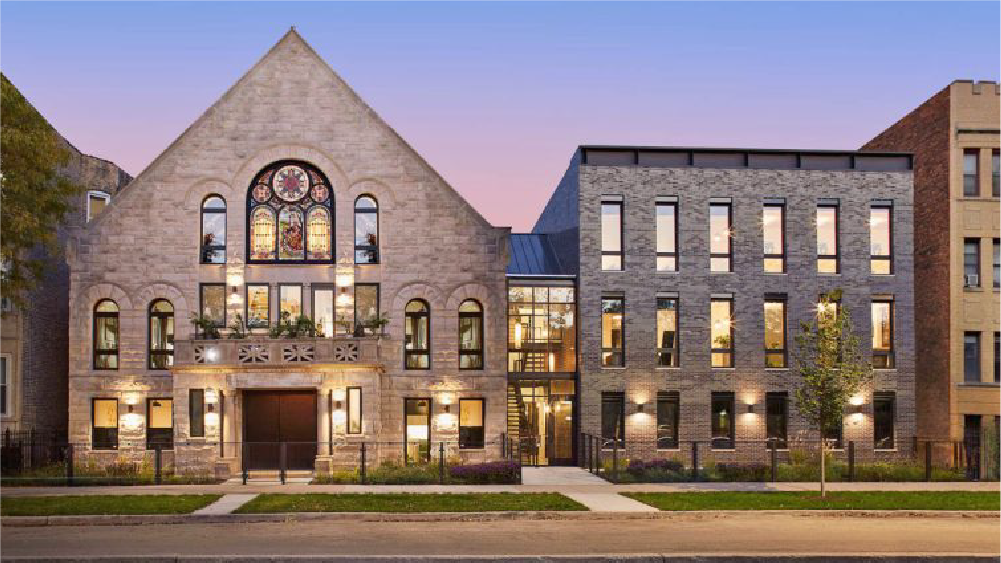
Each of these demonstrates adaptive reuse’s potential to reshape cities while respecting their past.
How 3D Rendering Empowers Adaptive Reuse Projects
It requires vision—and nothing brings vision to life like 3D rendering.
Whether you’re presenting to clients, applying for permits, or exploring design options, 3D renderings let you visualize a project before the first hammer swings.
They’re crucial for:
- Showing before-and-after transformations.
- Aligning stakeholders on complex design decisions.
- Gaining approvals from preservation boards or city councils.
At Xpress Rendering, we bring adaptive reuse projects to life through photorealistic visuals, immersive 360 virtual tours, and cinematic animations. Our visuals help architects and developers tell the story of their transformation—with clarity and impact.
Frequently Asked Questions
What’s the difference between adaptive reuse and retrofitting?
Retrofitting upgrades internal systems. Adaptive reuse changes the building’s purpose entirely.
Is adaptive reuse more sustainable than new construction?
Yes. It avoids demolition waste and leverages existing materials, significantly reducing environmental impact.
What types of buildings can be reused?
Almost any: churches, malls, schools, factories—even old infrastructure.
Can adaptive reuse apply to infrastructure?
Definitely. The High Line is a stellar example of infrastructure repurposed into public space.
How can architects present reuse projects to clients?
Through 3D renderings, interactive walkthroughs, and side-by-side visual comparisons.
Ready to Breathe New Life Into an Old Space? Let’s Visualize It Together
This isn’t just smart—it’s essential. In a time when sustainability and urban density matter more than ever, turning the past into the future is a design philosophy worth embracing.
Partner with Xpress Rendering to turn your adaptive reuse vision into a vivid reality. From photorealistic renders to video walkthroughs and architectural animations—we help you communicate, persuade, and inspire.
Whether you’re reviving a civic landmark, transforming a church, or reimagining an empty big-box store, compelling visuals make all the difference.
